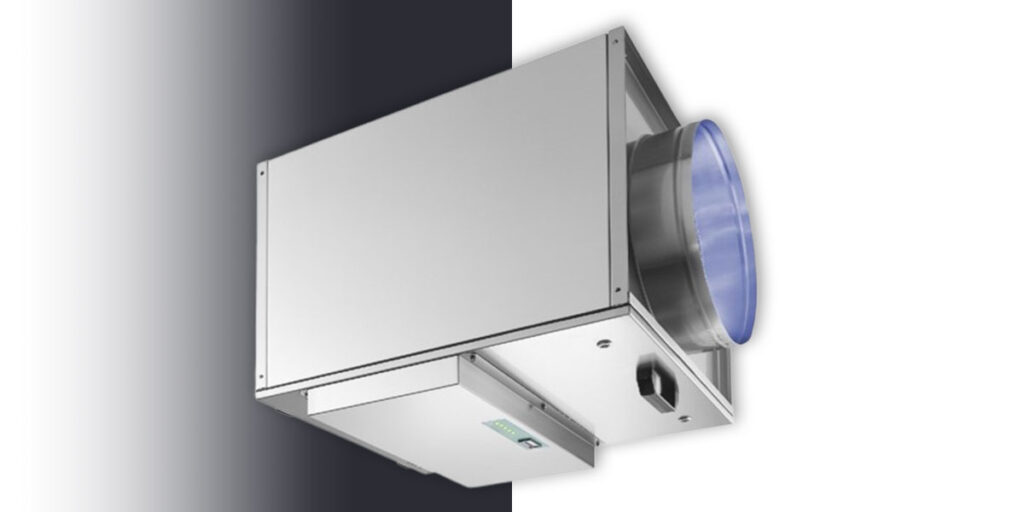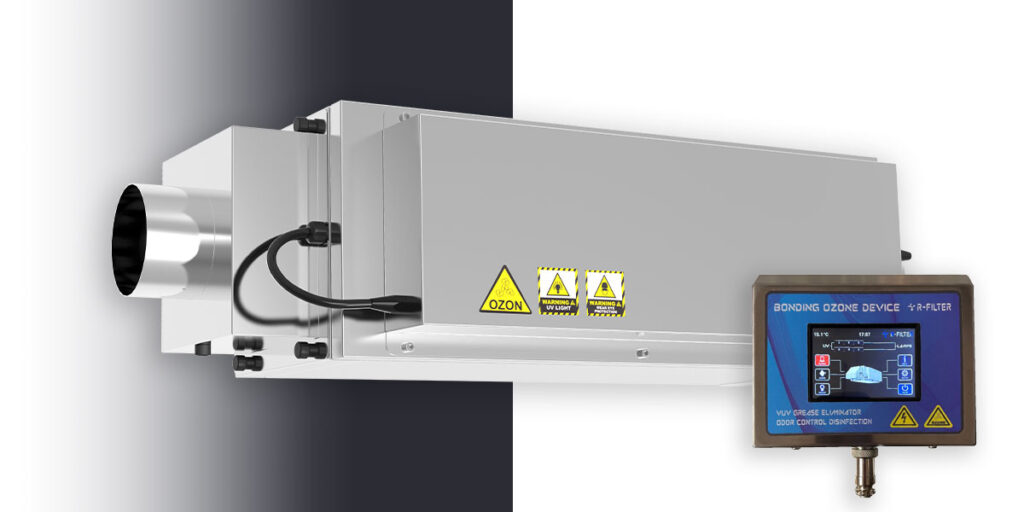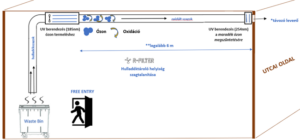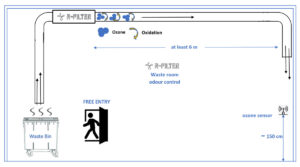When planning and designing new commercial kitchens, the issue of aerosol after-treatment of the extract air stream is an important topic, for which we have developed innovative solutions using UV-ozone technology.
Our treatment is an after-treatment, as the grease-laden extract air from the cooking station is already pre-treated by aerosol separator in the kitchen ventilation hood. This is a device for the separation of airborne solid or liquid particles, based on the effect of mechanical forces that deflect the particles out of the airflow.
As after-treatment, our UV ozone-technology is based on the effect of short-wave UV radiation (photolysis) and the chemical oxidation reaction of the ozone (O₃) produced from atmospheric oxygen (O₂) with the organic particles (ozonolysis). It is important to understand that the UV system is not filtration. Oxidation residue are mainly water, carbon dioxide and harmless grease ash.
Photolysis is a process of photo-decomposition where the organic molecules (grease and odour) are broken down by photons, when exposed to UV-C light.
Ozonolysis is the process of oxidation of the photo-decomposed molecules when exposed to ozone produced by the UV-lamps. A particular and immediate chemical reaction takes place, a so-called “cold combustion”. The technology prevents the accumulation of oil and grease residues from cooking in the extract air system, as well as the associated fire hazard. The end result is grease and odour reduction from kitchen exhaust.
We have developed two types of systems: Aerosol after-treatment system (UVS), which is installed in the extract air flow within the kitchen extract air duct after the aerosol separator in the kitchen ventilation hood and aerosol after-treatment system (UVO-C), which is located outside the extract air flow and ozone is injected from outside into the kitchen extract air ducts.
When using the above air purification system, the regulations of the standard EN 16282-8:2017 (equipment in commercial kitchens) must be observed:
A.6.3 Protection against UV radiation It shall not be possible to switch the UV installation back on in open state.
A.6.4 Protection against ozone A suitable safety device, e.g. flow sensor or pressure sensor, shall ensure that no ozone is released into the kitchen. The UV device shall also be connected with the extract air device via the controller and is only permitted to operate when the extract air fan is running. The UV device shall be installed in the low pressure section of the extract air system.
A.6.5 Ozone-emission The concentration of ozone in the exhaust air without kitchen operation shall not exceed 10 ppm measured at the outlet of the building.
Measurements shall be taken under following conditions: - full kitchen operation (maximum load) - without kitchen operation






